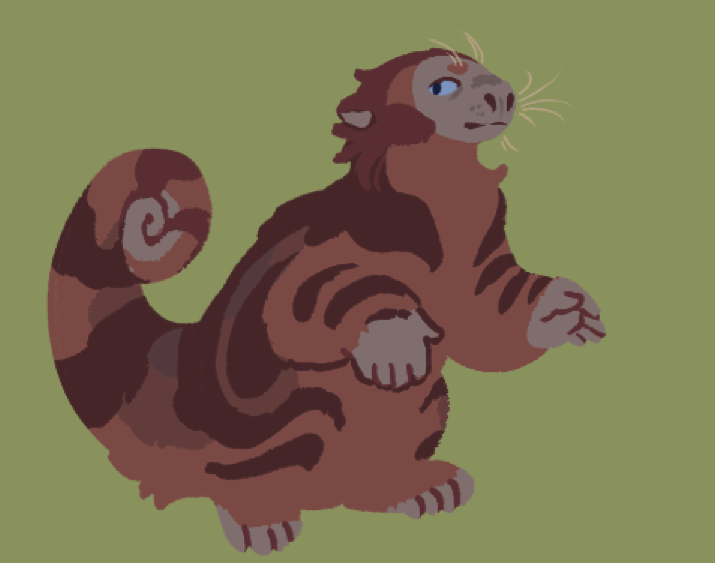Kipsang
| Kipsang | |
|---|---|
| |
| By Kell | |
| Characteristics | |
| Type | Mammal |
| Habitat | Arboreal |
| Diet | Omnivore |
Physiology
Kipsang are relatively small arboreal mammals with dexterous hands and prehensile tails that can support their body weight. They are covered in fur, with nursing individuals growing especially long fur upon the back for pups to cling to.
Their eyesight is excellent, and they are often interested by complex patterns and colors. Visual appeal is very important to them.
Kipsang prefer to eat fruit and insects primarily, followed by birds and their eggs, and even rodents. For kipsang who live near or around lissa, fish are a welcome addition to their diet.
On average, females tend to be larger than males as they have adapted to carry offspring while they climb. Culturally kipsang have a more solid distinction of gender than lissa do.
Behaviours
Kipsang prefer to spend nearly all of their time in trees and forested areas, where they can climb and run along branches, vines, and weave nests to sleep comfortably in. If individuals are in an area with no forests, they may habitually find themselves straying towards high vantage points to rest on, like ledges, rocks, cliffs, lone trees, and anything else that gives them a good lay of the land, or at least keeps them out of reach.
A very tactile and visually oriented species, kipsang like to keep their hands busy. They occupy themselves with all manner of crafts, visual arts, textiles, literature, and otherwise.
Alongside spoken language(s), many groups of kipsang have developed sign language in order to communicate silently.
Kipsang have a long history of being predated upon. They usually avoid walking on the ground and across open areas without escort for this reason, and tend to be rather flighty as a species. They also tend to be light sleepers. These predators include, but are not limited to, rocs, karnin, large flying birds of prey, and other beasts bigger than them. Thankfully, living in the trees leaves them fairly safe, and they have devised many methods of warding off potential predators.

